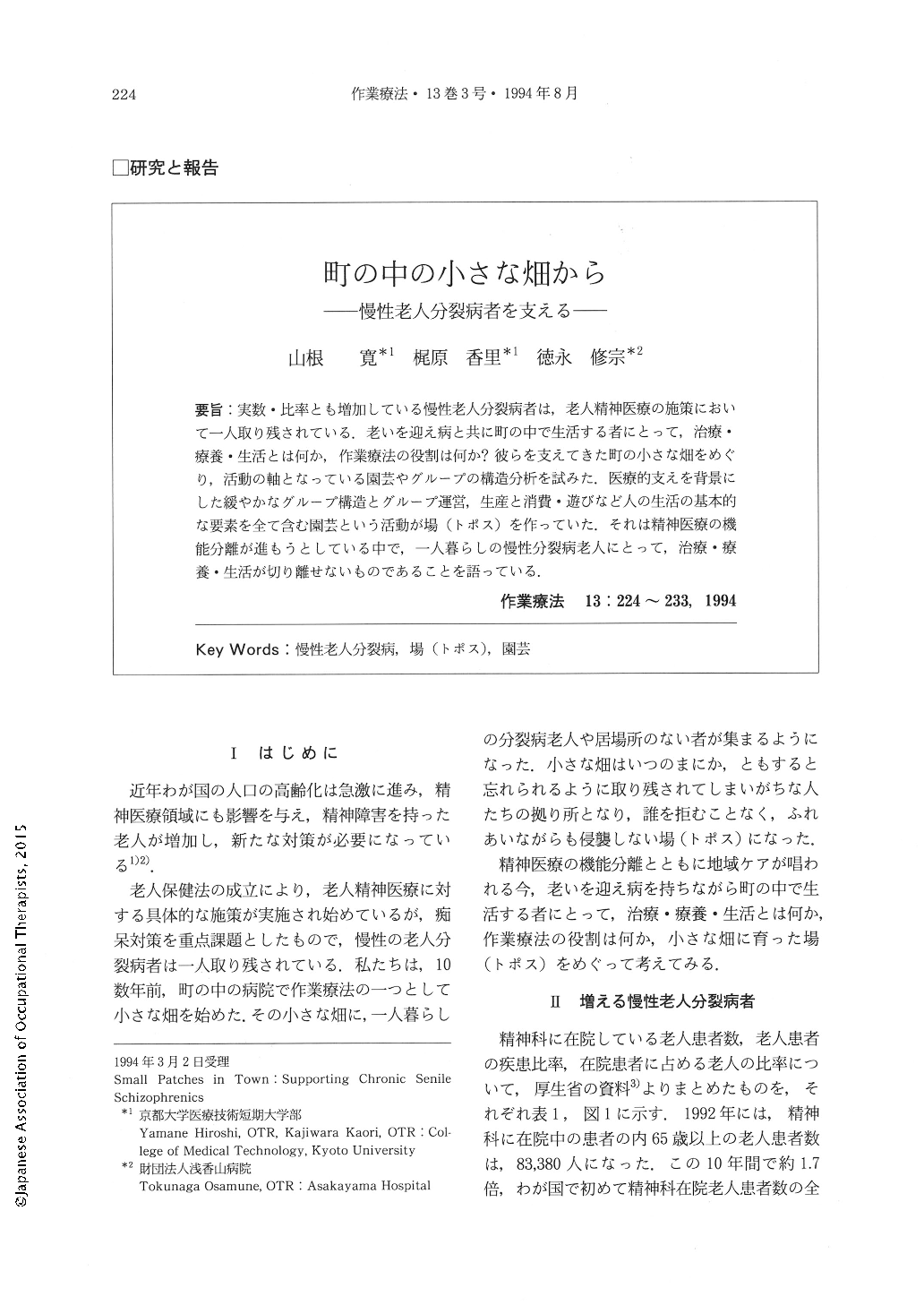Japanese
English
- 販売していません
- Abstract 文献概要
- 1ページ目 Look Inside
- 参考文献 Reference
- サイト内被引用 Cited by
要旨:実数・比率とも増加している慢性老人分裂病者は,老人精神医療の施策において一人取り残されている.老いを迎え病と共に町の中で生活する者にとって,治療・療養・生活とは何か,作業療法の役割は何か? 彼らを支えてきた町の小さな畑をめぐり,活動の軸となっている園芸やグループの構造分析を試みた.医療的支えを背景にした緩やかなグループ構造とグループ運営,生産と消費・遊びなど人の生活の基本的な要素を全て含む園芸という活動が場(トポス)を作っていた.それは精神医療の機能分離が進もうとしている中で,一人暮らしの慢性分裂病老人にとって,治療・療養・生活が切り離せないものであることを語っている.
Over the past several years, the number of elderly persons in Japan has increased considerably. Such increases effect the number of hospitalized psychiatric patients, too. According to the 1992 statistics of the Ministry of Health and Welfare, the number of hospitalized mental patients aged sixtyfive and over in Japan is more than eighty thousand, or roughly twenty-four percent of all hospitalized mental patients. That is increasing every year and has increased to nearly four times in the past twenty years. Rehabilitation programs for psychiatric patients have been gradually developed; however, most of the programs (occupational therapy, day care, night care etc.) are the target of younger patients. Psychiatric care for elderly patients has laid stress on dementia. Chronic senile schizophrenics are left alone. They have few social skills or supports, no vocational qualifications, and an unsatisfactory record at work, and they may have moved away from the therapeutic milieu into isolated areas of the world. However, if there are a few supports, a therapeutic milieu and psychiatric care, they can live their own life in the community. About ten years ago, we began a gardening group for senile schizophrenics. The gardening group is one occupational therapy group, organized the promote social interaction and a sense of group membership and to utilize mutual support between patients. During the past ten years, eighty-eight patients made use of the gardening group. The period of use is from one to ten years;three years is the average, and ten years is the maximum. The age of users is from twenty-eight to seventy-five; forty-nine is the average. Almost ninety percent of the users are schizophrenics, and more than half of them are outpatients. After using this group, except for a few users who had to be readmitted, most of them regained their self-confidence and renewed their own life in the community. The small patches in town became the "topos" beyond a gardening group and patches in town, and have supported some chronic senile schizophrenics.
The chronic senile schizophrenics need some modification of both the physical and social environment, if work, living and leisure roles are to provide effectively for very individual needs. The small patches in town suggest to us that it's not possible to separate treatment and living for elderly chronically ill patients who want to live in community.

Copyright © 1994, Japanese Association of Occupational Therapists. All rights reserved.


